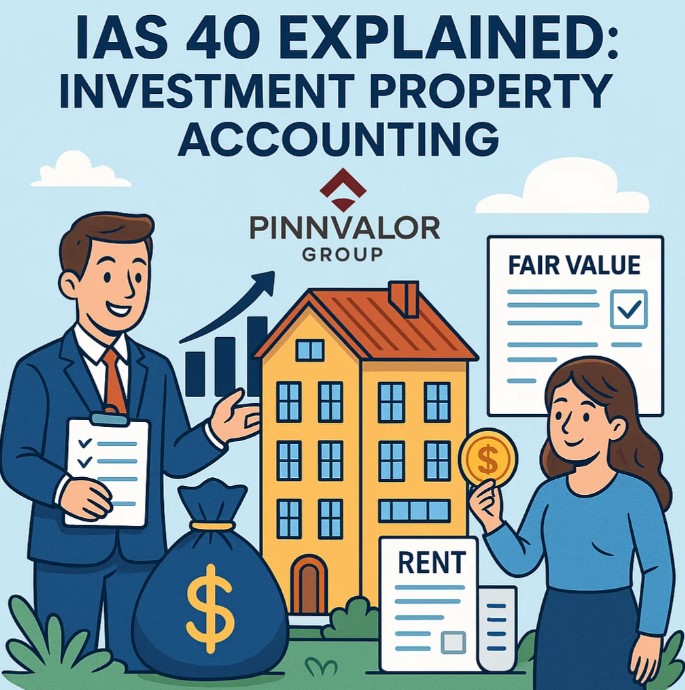
IAS 40 Explained: Investment Property Accounting
IAS 40 – Investment Property – is the International Financial Reporting Standard that governs the accounting treatment of real estate held for earning rentals or for capital appreciation, rather than for use in the production or supply of goods or services or for administrative purposes.
This standard provides guidance on recognition, measurement, transfers, and disclosures related to investment property. Understanding IAS 40 is crucial for entities involved in real estate investment, leasing, and financial reporting under IFRS.
Have you unlocked the potential of fair value accounting under IAS 40?
When a property earns while standing still, it's not just land or building — it's an investment.
🏢 What Qualifies as Investment Property?
According to IAS 40, investment property includes:
- Land held for long-term capital appreciation
- Buildings leased out under operating leases
- Property held for an undetermined future use (if not owner-occupied)
However, it excludes:
- Owner-occupied property (covered under IAS 16)
- Property held for sale in the ordinary course of business (covered under IFRS 5 or IAS 2)
🧾 Recognition Criteria
A property is recognized as investment property when:
- It is probable that future economic benefits will flow to the entity, and
- The cost of the property can be measured reliably.
💰 Initial Measurement
At the time of acquisition, investment property is measured at cost. This includes:
- Purchase price
- Directly attributable costs (e.g., legal fees, property transfer taxes, etc.)
📉 Subsequent Measurement: Cost Model vs Fair Value Model
IAS 40 offers two models for measuring investment property after initial recognition:
1. Cost Model
Under the cost model, the property is carried at cost less accumulated depreciation and impairment losses. This model follows IAS 16 principles.
2. Fair Value Model
Under the fair value model:
- Investment property is measured at fair value at each reporting date.
- Changes in fair value are recognized in the profit or loss (P&L) for the period.
Important: Once a model is chosen, it must be applied consistently to all investment property (except where fair value cannot be reliably measured).

🔁 Transfers In and Out of Investment Property
Transfers to or from investment property classification are permitted only when there is a change in use. Examples include:
- Owner-occupied property becoming leased out – IAS 40 applies from the date of change.
- Property held for sale transferred to investment property if leasing commences.
Upon transfer, the property's accounting basis must be adjusted to reflect the new classification.
📄 Disclosure Requirements
Entities are required to disclose the following under IAS 40:
- Whether the cost or fair value model is used
- If fair value model is used – the basis of determining fair value
- Amounts recognized in profit or loss related to rental income and direct operating expenses
- Reconciliation of the carrying amount of investment property at the beginning and end of the period
🌍 Practical Example
Example: ABC Ltd. purchases a commercial building for ₹10 million and incurs ₹0.5 million in legal and registration costs. The company rents it out under an operating lease.
- Initial Measurement: ₹10.5 million (₹10M + ₹0.5M)
- Subsequent Measurement: If fair value model is selected, the building’s value will be re-evaluated at each reporting date and gains/losses will be recognized in P&L.
⚖️ Comparison with Ind AS 40
Under Indian GAAP (Ind AS 40), the fair value model is not permitted for subsequent measurement. Entities must use the cost model and disclose fair value in notes. This marks a key difference from IAS 40, which offers more flexibility.
🧠 Conclusion
IAS 40 provides a robust framework for accounting investment property, offering flexibility through its fair value model, which enhances transparency and reflects the economic reality of asset valuation.
For entities with significant real estate holdings, choosing the right model and understanding disclosure requirements is essential for accurate and compliant financial reporting.
